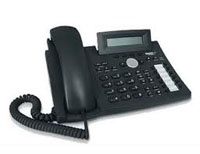Using a VoIP Number and Call Answering
Many businesses have chosen to use VoIP services to minimize their telephone bills. With the continuing proliferation of these services, an increasing number of small to medium-size businesses are likely to take advantage of VoIP. Like any business, however, these businesses also need call answering services. Fortunately, using a VoIP number and call answering is a fairly straightforward process.
First, it’s helpful to understand a bit about how traditional call centers work. Though just about all of them are now using one software program or another to perform the vast majority of their functions, at the lowest level, they still depend on hardware to get the job done. In order to route a call, hardware switches need to do the dirty work of actually routing the caller from one location to the next, unless these locations are served by the same switch. If volumes are high, or the hardware is damaged or improperly installed, calls can be dropped. VoIP call centers don’t have this problem. That’s why using a VoIP number and call answering is becoming more popular and will continue to do so as VoIP gins a better foothold in the market.
Using a VoIP number and call answering is actually a very bullet-proof process. With no hardware to worry about, everything is controlled by software. This still leaves room for programming errors and unforeseen software glitches, but in general, software is far less error-prone than mechanical systems like switches. With rigorous software testing, VoIP call centers can perform as well or better than the more traditional variety.
Getting up and Running Using a VoIP Number and Call Answering
Using a VoIP number and call answering might be as simple as downloading a software program. Just how complex of a call center you want is entirely up to you. A simple system that can route calls to other VoIP devices and take voicemail messages and faxes will run you around $100.
If you need a more complex system, you’ll need to have a talk with your VoIP provider. They may have policies that prevent you from running a high-volume call center without paying certain premiums. But once you clarify where your call center will be hosted, the rest will scale remarkably easily.
With no limits imposed by hardware switches, your call center can route calls wherever they need to go using virtual software switches. Although it’s more difficult to overload a software switch, it’s not impossible. Indeed, the systems on which the software is running will need to be capable of handling the load placed upon them.
Setting up a call center is so easy that several businesses have popped up recently with plans to host call centers for businesses throughout their area and even around the country. Though it’s certainly possible to route calls around the world, delays and packet loss caused by the internet make this a less desirable option.
In short, using a VoIP number and call answering is a practice that is continuing to grow as VoIP proliferates around the world. The actual process of getting a call answering service up and running with your VoIP number is a simple one, provided every part uses the same standards, such as SIP. As standards are solidified and traditional systems fall by the wayside, using a VoIP number and call answering is sure to become more prevalent.

